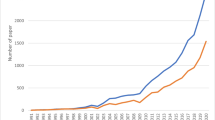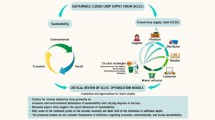Abstract
Promoting energy efficiency in iron and steel production provides opportunities for mitigating environmental impacts from this energy-intensive industry. Energy efficiency technologies differ in investment costs, fuel-saving potentials, and environmental performance. Hence the decision-making of the adoption strategy needs to prioritize technological combinations concerning these multi-dimensional objectives. To address this problem, this study proposes a hybrid multi-criteria decision-support model for adopting energy efficiency technologies in the iron and steel industry. The modeling framework integrates a linear programming model that determines the optimal technology adoption rates based on the techno-economic, energy, and environmental performance details and an interactive multi-criteria model analysis tool for diverse modeling environments. A real case study was performed in which a total number of 56 energy efficiency technologies were investigated against various criteria concerning economics, energy, and environmental performances. The results examine the tradeoffs and synergies were examined with regard to seven criteria. A balanced solution shows that a total investment of 13.4 billion USD could save 2.51 Exajoule fuel consumption, cut 67.4 million tons (Mton) CO2 emissions, and reduce air pollution of 1.5 Mton SO2, 1.41 Mton NOx, and 0.86 Mton PM, respectively. The case study demonstrates the effectiveness and applicability of the proposed multi-criteria decision-making support framework.





Similar content being viewed by others
References
Alao, M. A., Ayodele, T. R., Ogunjuyigbe, A. S. O., & Popoola, O. M. (2020). Multi-criteria decision based waste to energy technology selection using entropy-weighted TOPSIS technique: The case study of Lagos, Nigeria. Energy, 201, 117675. https://doi.org/10.1016/j.energy.2020.117675
Amann, M., Bertok, I., Borken-Kleefeld, J., Cofala, J., Heyes, C., Höglund-Isaksson, L., Klimont, Z., Nguyen, B., Posch, M., Rafaj, P., Sandler, R., Schöpp, W., Wagner, F., & Winiwarter, W. (2011). Cost-effective control of air quality and greenhouse gases in Europe: Modeling and policy applications. Environmental Modelling & Software, 26, 1489–1501. https://doi.org/10.1016/j.envsoft.2011.07.012.
An, R., Yu, B., Li, R., & Wei, Y.-M. (2018). Potential of energy savings and CO2 emission reduction in China’s iron and steel industry. Applied Energy, 226, 862–880.
Baumann, M., Weil, M., Peters, J. F., Chibeles-Martins, N., & Moniz, A. B. (2019). A review of multi-criteria decision making approaches for evaluating energy storage systems for grid applications. Renewable and Sustainable Energy Reviews, 107, 516–534. https://doi.org/10.1016/j.rser.2019.02.016
Campos-Guzmán, V., García-Cáscales, M. S., Espinosa, N., & Urbina, A. (2019). Life cycle analysis with multi-criteria decision making: A review of approaches for the sustainability evaluation of renewable energy technologies. Renewable and Sustainable Energy Reviews, 104, 343–366. https://doi.org/10.1016/j.rser.2019.01.031
China Ministry of Environmental Protection. (2017). Pollution accounting method for 17 industries included in emissions allowance management system.
China National Bureau of Statistics. (2020). China statistical yearbook of environment 2019.
China National Bureau of Statistics. (2021). China energy statistical yearbook 2020.
Chowdhury, A. K., Dang, T. D., Nguyen, H. T., Koh, R., & Galelli, S. (2021). The greater mekong’s climate-water-energy nexus: how enso-triggered regional droughts affect power supply and CO2 emissions. Earth’s Future, 9, e2020EF001814.
Colapinto, C., Jayaraman, R., Ben Abdelaziz, F., & La Torre, D. (2020). Environmental sustainability and multifaceted development: Multi-criteria decision models with applications. Annals of Operations Research, 293, 405–432. https://doi.org/10.1007/s10479-019-03403-y
GAMS Development Corp. (2021). GAMS documentation 36.
Garcia-Bernabeu, A., Benito, A., Bravo, M., & Pla-Santamaria, D. (2016). Photovoltaic power plants: A multi-criteria approach to investment decisions and a case study in western Spain. Annals of Operations Research, 245, 163–175. https://doi.org/10.1007/s10479-015-1836-2
Ghenai, C., Albawab, M., & Bettayeb, M. (2020). Sustainability indicators for renewable energy systems using multi-criteria decision-making model and extended SWARA/ARAS hybrid method. Renewable Energy, 146, 580–597.
Granat, J., & Makowski, M. (2000). Interactive specification and analysis of aspiration-based preferences. European Journal of Operational Research, 122, 469–485.
Hasanbeigi, A., Morrow, W., Sathaye, J., Masanet, E., & Xu, T. (2013). A bottom-up model to estimate the energy efficiency improvement and CO2 emission reduction potentials in the Chinese iron and steel industry. Energy, 50, 315–325.
Huppmann, D., Gidden, M., Fricko, O., Kolp, P., Orthofer, C., Pimmer, M., Kushin, N., Vinca, A., Mastrucci, A., Riahi, K., & Krey, V. (2019). The MESSAGEix integrated assessment model and the ix modeling platform (ixmp): An open framework for integrated and cross-cutting analysis of energy, climate, the environment, and sustainable development. Environmental Modelling & Software, 112, 143–156.
Kumar, A., Sah, B., Singh, A. R., Deng, Y., He, X., Kumar, P., & Bansal, R. C. (2017). A review of multi criteria decision making (MCDM) towards sustainable renewable energy development. Renewable and Sustainable Energy Reviews, 69, 596–609. https://doi.org/10.1016/j.rser.2016.11.191
Lee, J., Bazilian, M., Sovacool, B., & Greene, S. (2020). Responsible or reckless? A critical review of the environmental and climate assessments of mineral supply chains. Environmental Research Letters, 15, 103009. https://doi.org/10.1088/1748-9326/ab9f8c
Lehtveer, M., Makowski, M., Hedenus, F., McCollum, D., & Strubegger, M. (2015). Multi-criteria analysis of nuclear power in the global energy system: Assessing trade-offs between simultaneously attainable economic, environmental and social goals. Energy Strategy Reviews, 8, 45–55.
Makowski, M., & Wierzbicki, A. P. (2003). Modeling knowledge: Model-based decision support and soft computations. In Applied decision support with soft computing. Springer, pp. 3–60.
Marinakis, V., Doukas, H., Xidonas, P., & Zopounidis, C. (2017). Multicriteria decision support in local energy planning: An evaluation of alternative scenarios for the sustainable energy action plan. Omega, 69, 1–16. https://doi.org/10.1016/j.omega.2016.07.005
Miraj, P., Berawi, M. A., & Utami, S. R. (2021). Economic feasibility of green office building: Combining life cycle cost analysis and cost–benefit evaluation. Building Research and Information, 49, 624–638. https://doi.org/10.1080/09613218.2021.1896354
Mukhamet, T., Kobeyev, S., Nadeem, A., & Memon, S. A. (2021). Ranking PCMs for building façade applications using multi-criteria decision-making tools combined with energy simulations. Energy, 215, 119102. https://doi.org/10.1016/j.energy.2020.119102
Parkinson, S. C., Makowski, M., Krey, V., Sedraoui, K., Almasoud, A. H., & Djilali, N. (2018). A multi-criteria model analysis framework for assessing integrated water-energy system transformation pathways. Applied Energy, 210, 477–486.
Qian, H., Xu, S., Cao, J., Ren, F., Wei, W., Meng, J., & Wu, L. (2021). Air pollution reduction and climate co-benefits in China’s industries. Nature Sustain, 4, 417–425. https://doi.org/10.1038/s41893-020-00669-0
Ren, L., Zhou, S., Peng, T., & Ou, X. (2021). A review of CO2 emissions reduction technologies and low-carbon development in the iron and steel industry focusing on China. Renewable and Sustainable Energy Reviews, 143, 110846. https://doi.org/10.1016/j.rser.2021.110846
Riccardi, R., Bonenti, F., Allevi, E., Avanzi, C., & Gnudi, A. (2015). The steel industry: A mathematical model under environmental regulations. European Journal of Operational Research, 242, 1017–1027. https://doi.org/10.1016/j.ejor.2014.10.057
Saraswat, S. K., & Digalwar, A. K. (2021). Evaluation of energy alternatives for sustainable development of energy sector in India: An integrated Shannon’s entropy fuzzy multi-criteria decision approach. Renewable Energy, 171, 58–74. https://doi.org/10.1016/j.renene.2021.02.068
The Editorial Board of China Steel Yearbook, 2021. (2020). China Steel Yearbook.
Vishnupriyan, J., & Manoharan, P. S. (2018). Multi-criteria decision analysis for renewable energy integration: A southern India focus. Renewable Energy, 121, 474–488. https://doi.org/10.1016/j.renene.2018.01.008
Wang, Y., Chen, C., Tao, Y., Wen, Z., Chen, B., & Zhang, H. (2019). A many-objective optimization of industrial environmental management using NSGA-III: A case of China’s iron and steel industry. Applied Energy, 242, 46–56. https://doi.org/10.1016/j.apenergy.2019.03.048
Wierzbicki, A. P. (1980). The use of reference objectives in multiobjective optimization. In Multiple criteria decision making theory and application (pp. pp. 468–486). Springer.
Wierzbicki, A. P., Makowski, M., & Wessels, J. (2000). Interfaces. In Model-based decision support methodology with environmental applications (pp. 283–307). Dordrecht, The Netherlands: Kluwer Academic Publishers.
World Steel Association, 2021. 2020 World Steel in Figures.
Xu, Y., Li, Y., Zheng, L., Cui, L., Li, S., Li, W., & Cai, Y. (2020). Site selection of wind farms using GIS and multi-criteria decision making method in Wafangdian, China. Energy, 207, 118222. https://doi.org/10.1016/j.energy.2020.118222
Yu, S., Zheng, S., Gao, S., & Yang, J. (2017). A multi-objective decision model for investment in energy savings and emission reductions in coal mining. European Journal of Operational Research, 260, 335–347. https://doi.org/10.1016/j.ejor.2016.12.023
Zhang, C., Cai, W., Liu, Z., Wei, Y.-M., Guan, D., Li, Z., Yan, J., & Gong, P. (2020). Five tips for China to realize its co-targets of climate mitigation and sustainable development goals (SDGs). Geography and Sustainability, 1, 245–249. https://doi.org/10.1016/j.geosus.2020.09.001
Zhang, Q., Wang, Y., Zhang, W., & Xu, J. (2019). Energy and resource conservation and air pollution abatement in China’s iron and steel industry. Resources, Conservation and Recycling, 147, 67–84. https://doi.org/10.1016/j.resconrec.2019.04.018
Zhang, S., Worrell, E., Crijns-Graus, W., Wagner, F., & Cofala, J. (2014). Co-benefits of energy efficiency improvement and air pollution abatement in the Chinese iron and steel industry. Energy, 78, 333–345.
Zopounidis, C., Garefalakis, A., Lemonakis, C., Passas, I., (2020). Environmental, social and corporate governance framework for corporate disclosure: a multi-criteria dimension analysis approach. Management Decision.
Acknowledgements
This research was funded by the National Natural Science Foundation of China (71961137012, 71571069, 71704055, 71874055, 71904007), the National Science Centre of Poland (2018/30/Q/HS4/00764), and the Major Innovation and Planning Interdisciplinary Platform for the “Double-First Class” Initiative, Renmin University of China.
Author information
Authors and Affiliations
Corresponding author
Additional information
Publisher's Note
Springer Nature remains neutral with regard to jurisdictional claims in published maps and institutional affiliations.
Electronic supplementary material
Below is the link to the electronic supplementary material.
Appendices
Appendix
Nomenclature
See Table
3.
Acronyms
- MC:
-
Multiple criteria
- MCD:
-
AMulti-criteria decision analysis
- MCMA:
-
Multi-criteria model analysis
- BOF:
-
Basic oxygen furnace
- EAF:
-
Electric arc furnace
- CRF:
-
Casting, rolling, and finishing
- GAINS:
-
Greenhouse gas and air pollution interactions and synergies
- MPP:
-
Mathematical Programming Problem
- CAF:
-
Criterion achievement function
- ASF:
-
Achievement satisfaction function
- PWL:
-
Piece-wise linear
- LP:
-
Linear programming
- GAMS:
-
General algebraic modeling system
Rights and permissions
About this article
Cite this article
Ren, H., Zhou, W., Makowski, M. et al. A multi-criteria decision support model for adopting energy efficiency technologies in the iron and steel industry. Ann Oper Res 325, 1111–1132 (2023). https://doi.org/10.1007/s10479-022-04548-z
Accepted:
Published:
Issue Date:
DOI: https://doi.org/10.1007/s10479-022-04548-z




